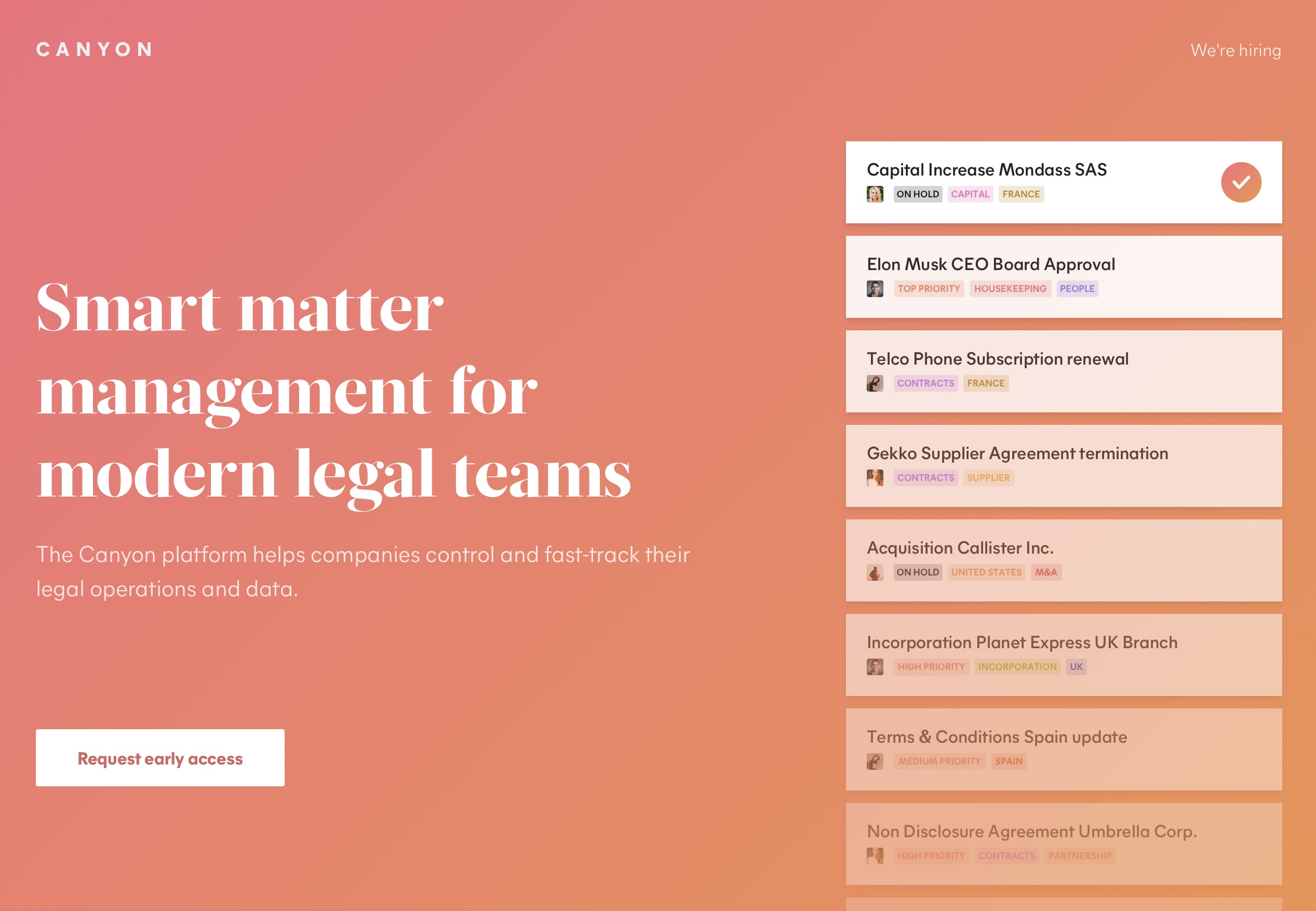Some interesting news for lovers of open, decentralized communications tech: Element, the company behind the eponymous Matrix-based Slack competitor (formerly known as Riot) has acquired developer-focused chat platform, Gitter, from dev services giant GitLab, which picked it up back in 2017.
The acquisition means Gitter’s community of some 1.7M users will be migrating to Matrix, the underlying decentralized comms protocol also made by Element — assuming they stick around for the ride with the new owner, of course. But Element is going out of its way to reassure Gitter users they’ll feel properly at home on Matrix.
In a blog post discussing the acquisition, the top-line message from Element CEO and Matrix co-founder, Matthew Hodgson, is that nothing will change in the short term. Furthermore, the pitch to the Gitter community is that, down the line, there will be plenty to gain from the migration/eventual assimilation as a “Gitter-customized version of Element” running on Matrix.
This is because the pledge is feature parity first (so, yes, that means Element will be gaining a bunch of Gitter features; such as threads and instant live room peeking, to name two). Then, once Gitter migrates to Element, it’ll get access to “all the goodies” the combination brings — including end-to-end encryption; reactions; VoIP and conferencing; widgets; all the alternative clients, bots, bridges and servers; the full open standard Matrix API; and the ability to fully participate in that decentralized network…
Another enticing promise is “constantly improving native iOS & Android clients” — which the Element team notes is a welcome alternative to Gitter’s natives ones, given they’re already being deprecated.
The migration will also mean Element will be replacing the current “creaky” matrix-appservice-gitter bridge.
“We’re going to build out native Matrix connectivity — running a dedicated Matrix homeserver on gitter.im with a new bridge direct into the heart of Gitter; letting all Gitter rooms be available to Matrix directly as (say) #angular_angular:gitter.im, and bridging all the historical conversations into Matrix via MSC2716 or similar,” it writes.
“Gitter users will also be able to talk to other users elsewhere in the open Matrix network — e.g. DMing them, and (possibly) joining arbitrary Matrix rooms. Effectively, Gitter will have become a Matrix client,” Element adds.
So the tl;dr is that current Gitter users should have plenty of reasons to be cheerful about the acquisition. (Plus, as Hodgson points out, anyone less than happy with the direction of travel can of course fork the platform and go their own way, being as Element is an open source company. Though of course the hope is no one will feel the need to fork it.)
The decision to migrate Gitter to Element has been made purely on resources/efficiency grounds, per Hodgson — to avoid the need for Element to maintain both apps over the longer term. He tells TechCrunch the migration will likely take around a year — “possibly more”.
Element also plans to “comprehensively” document the whole process so that it can serve as “the flagship example of how to make an existing chat system talk – and transition to — Matrix”, as it puts it, so it’s got its eye on encouraging more apps to make the move to Matrix.
While Element says GitLab approached them about taking on Gitter they confess to a long-time “crush” on the platform — saying they jumped at the chance when the other company came knocking. (Financial terms of the transaction are not being disclosed, however.)
TechCrunch can claim a teeny part in this open source love-in, being as we’re credited with accidentally introducing the teams — after they found themselves across the aisle exhibiting at Disrupt London, back in 2014 (so you truly never know who you’ll serendipitously meet in Startup Alley).
Taking on Gitter is not just a passion project for Element, though. They saw they see the acquisition boosting growth of the Matrix ecosystem as a whole other developer community gets plugged in and — they hope — converted to evangelists for the open network.
“If developers are using it then when they need something to build on — a technology for their messaging apps — then they will naturally use Matrix. And if we want to grow this ecosystem and have as many apps as possible built on top of the protocol then we need to make it known to everyone so if they’re using it for their own comms it makes it easier for them,” Element COO, Amandine Le Pape, tells TechCrunch.
“We’re really doing this for Matrix, rather than for Element,” adds Hodgson. “We’re just trying to grow and make the Matrix network larger and healthier. So it’s not a matter of we can then sell it to governments as a communication platform more easily, it’s much more… that it becomes known to more developers so that when they build their next WhatsApp they don’t go and invent the wheel all over again. They would just obviously use Matrix because that’s what they’re already using to co-ordinate on working on React or Angular or whatever technology they already know.”
He says bringing Gitter into the Matrix fold is “obviously” a boon to developers who already use Element — such as the Mozilla community and Rust developers — as it will help reduce fragmentation.
“Half the world is on Gitter, half the world is on Element, and some poor lost souls are stuck in Discord and Slack. So by going and bringing the open guys together it will just be very concretely more useful in Element that if you want to reach out to whatever developer you will be able to find them in once place rather than having this horrible split brain between the two,” he adds.
Asked about its decision to sell Gitter, GitLab told us it has never been a core element of its business focus.
“While GitLab has contributed to Gitter’s growth in the past three years, Gitter has always been a standalone product, independent of GitLab, even after GitLab’s acquisition in 2017. GitLab and Element saw an opportunity for Gitter to grow further under Element,” it said.
“GitLab has a core business focus to be the market’s leading complete DevOps platform,” it added. “It is not a case of stepping away but seeing an opportunity for an important tool to grow further. In true open source fashion, Gitter is free to use, without limits, for everyone to create public or private communities and to contribute back to. It is currently the only developer-centric messaging platform which is an open source, free, uncapped messaging SaaS. The platform has not been monetized yet and has no commercial edition. Gitter is available on the web with clients available for Mac, Windows, Linux, iOS, and Android.”

Image credit: GitLab/Gitter
Element said it will be bringing on board Gitter’s dev team as part of the acquisition — albeit, it’s actually just one “superstar” developer running the whole thing, per Hodgson and Le Pape. So the team integration process at least shouldn’t be too challenging.
(For the record, Element is the new name for New Vector (the company) and Riot (the messaging app) which was originally called Vector. So that’s Vector > Riot > Element; and New Vector > Element. “We decided to bring everything under one single brand — as now Element the company, Element the app and Element Matrix Services for the hosting platform,” explains La Pape on this recent rebranding.)
Momentum for Matrix
Matrix, meanwhile, has been continuing to gain momentum throughout the pandemic — thanks to the accelerated shift to remote working pushing demand for secure (and, well, sovereign) digital messaging up the public sector agenda.
“Recently we’ve had the German education system coming on board, the German military coming on board. And we have two other governments who, irritatingly, we can’t disclose yet — but suffice to say they are both very big and very exciting,” notes Hodgson. “They’re in paid trials. Once we successfully convert those it will be as big, if not bigger, than France in terms of banging on about it.”
“In all of these instances they have gone and slightly tweaked the app. They have forked Element, they have branded it, they’ve built it into an existing tool that they have and it really ties in with the developer story — the reason that they feel happy building on an open standard is because of the wider developer ecosystem,” he adds.
“We’re also seeing a whole galaxy of little startups — nothing to do with us — who are building on Matrix successfully,” Hodgson also tells us, pointing to a German healthcare startup called Famedly as one example.
“It’s unrelated to us but it’s fun to see other companies basically betting the farm on the protocol. So, again, the happier developers are to use the protocol the more random startups like that will begin to bubble up,” he adds. “And if the next-gen of Slack killers happen to be on Matrix — whether it’s us, or anybody else, so much the better.”
Another key factor that could accelerate momentum for Matrix is interoperability — a topic area regulators are increasingly eyeing as they consider how to ensure competition thrives in digital markets that can be prone to ‘winner takes all’ network effects.
Accusations of anti-competitive behavior are also being thrown around in the real-time messaging space specifically. Notably, in July, Slack filed an antitrust complaint against Microsoft arguing the latter is being anti-competitive by unfairly bundling its rival Teams product with its cloud-based productivity suite, Microsoft 365.
The Matrix network is no such walled garden, of course — and Element the app offers bridges to other messaging platforms, enabling its users to chat with others siloed on proprietary platforms like Slack. Slack, however, hasn’t offered the same courtesy to Element (only going so far as offering a bridge for, er, email users last year).
“It would be great for Slack, and [Microsoft] Teams and Discord to join in,” says Hodgson, arguing: “I think there’s probably more impetus for them to do so in terms of being able to interoperate with other systems, because we have so many bridges. If you were migrating from Skype for Business to Slack or something the Matrix could be the bridge between the two.”
“They have different users, right,” continues Le Pape, fleshing out the case for such platforms to open up to Matrix. “Usually Teams ends up being the one for the big companies who are actually using Office 365 while Slack might be more of the startup side of things so, in the end, if we could actually join everything together it would be good.” “If you all actually were able to talk to one another then that would solve it,” she adds in reference to Slack’s antitrust complaint against Microsoft.
Hodgson posits that if Microsoft were to expose Teams into Matrix it could help it defend against the complaint — being as it would be able to tell regulators it’s “participating in a global open standard network” that lets users pick whichever client they like. “I think that’s a very compelling solution,” he suggests, adding that Element is involved in discussions with “various parties” on the EU side “to make sure people understand there are viable open standards for doing this”.
“Historically, before Matrix, basically there wasn’t anything that had the feature set that you would expect from Slack or Teams. Whereas now there is actually a viable middle language,” he adds.
Asked if it’s a wild idea that a polished consumer messaging app such as Telegram could ever move to Matrix, Hodgson describes it as an “interesting” thought — but admits there’s still a bit of a feature gap for Element, while also lauding the Telegram’s technical performance.
“I could see there being some friction in joining Matrix as it is today because it would be a slight backwards step for them… However the pressure is therefore on us to go and get to the point that Element is as snappy and as polished as Telegram — and [Element already] has good encryption,” he says. “At which point I think the tables could turn interestingly.
“But they’ve got hundreds of millions of users. I guess they feel they’re doing it right. They would rather, perhaps, become the next WhatsApp and be a 2BN user silo rather than play nice with other people because they’re already past critical mass. But perhaps if we do our job and make Matrix large enough and interesting enough that it is worth their while to link to it then why not?”
















